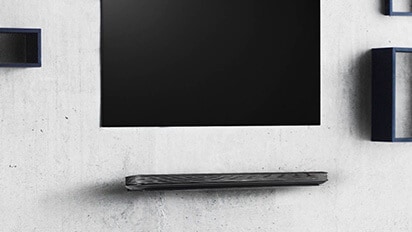At a Glance
If the clothes are too wet at the end of the cycle, it could be the result of a drain restriction or an unbalanced load. There are a few troubleshooting steps to try if the clothes inside the washer are coming out too wet.
If the washer is displaying an error code, please see our LG Washer - Error Code List article.
Try This
-
Does the unit display an error code?
Yes No -
Click here for a list of error codes and possible solutions.
-
The washer's drain hose will normaly drain into a stand pipe or laundry tub / sink.
It should be no less than 34" and no higher than 96" (8 ft) from the floor.
NoteIf you are unable to get an exact measurement, check if the drain hose loop is higher than the top of the washer drum to prevent siphoning.
Does the drain hose meet this criteria?
Yes No -
Do you see an HE logo on your detergent?
Yes No -
If the drain hose is not with in these parameters, it will affect the performance of the washer. We recomend to adjust the height of the drain pipe loop or contact a plumber to assist.
-
If using regular HE then 2 tablespoons of detergent (as long as prewash not been used)
If using HE with over x2 concentration, then only 1 tablespoon.
HE x2 should normaly be seen on the caps such as the exmpales below:
2x concentration Using the wrong detergent or too much of the right detergent can cause the unit not to drain completely or for the clothes to feel whether after the load.
Using the wrong detergent or too much HE detergent causes excess of suds. The unit will try to get rid of some of the excess of suds by adding time to the cycle, up to 2 hrs . During this time more water will be brought into the unit to try and remove the excess of suds. If the unit is unable to get rid of it, the cycle will stop. As a result the clothes will feel wet and the inside of the unit will have more water than usual.
Next Step -
Our units are designed to be used with HE detergent only. These detergents are low sudsing and are formulated for use with small amounts of water.
Next Step -
If you lean on the unit or put your hands on it does the unit rock back and forth or side to side?
Yes No -
This would imply the unit is not leveled properly.
To better orient you, we need to identify the type of washer.
Is your washer on a pedestal?
Yes No -
What type of flooring is the washer on?
Concrete Tile or Hardwood -
Click here for help and instructions on how to level a pedestal washer.
-
Click here for help and instructions on how to level your washer.
-
When the unit is running, can the vibrations be identified only in the laundry room or throughout the home?
Only Laundry Room Throughout the Home -
Some flexing normal. Leveling adjustment may reduce the vibrations further.
NoteNext StepClick here for help and instructions on how to level your washer.
-
If the unit is vibrating or shaking specially during the Spin cycle, this is an indication that the floor is not sturdy enough.
The floor has too much flex, reinforcement necessary.We recommend to:
- Move the unit to sturdy floor.
- If unable to move to sturdy floor, reduce spin speeds.
-
Is a drain pan or foreign object under the unit?
Yes NoDrain Pan Foreign Object -
Please remove the item and verify that the unit is leveled.
NoteClick here for help and instructions on how to level your washer.
Next Step -
Was a single item, a large, or bulky item being washed?
Yes No -
The following load types can become unbalanced during the spin cycle and fail to complete the spin cycle:
- Large items such as sheets, blankets, mattress pads, etc.
- Small loads or single items
- Bulky items such as rugs, pillows, stuffed animals, etc.
In this case, use a lower spin speed or add additional items to balance the load.
Next Step -
Manually drain the unit and check the drain filter with the following steps
Step Description Picture 1
Press the POWER button to turn the washing machine off and remove the plug from the outlet.
2
Locate the service panel on the bottom-left corner of the unit and open it.
3
Unclip the drain hose and remove the plug from the drain hose to drain the water remaining inside the wash tub. NoteDo not pull the hose to far out, as it will kink the hose and prevent the water from draining out.
4
Drain the excess water into a short bucket or shallow pan. NoteThe amount of water will vary according to when in the cycle the issue occurred.
5
After all the remaining water has drained from the drain hose, twist the pump filter counterclockwise to remove from the washer.
6
Clean the pump filter and filter opening with a soft-bristled brush and warm water.
7
Place the cap back into the drain hose and reattach the hose to the washer.
8
Insert the drain pump filter back into the washing machine, making sure it is inserted securely. Close the drain pump filter cover.
Once finished, proceed to the next step.
Next Step -
Let's perform a test cycle:
- Press the POWER button to turn the washer on.
- Press the RINSE & SPIN button.
- Press the START/PAUSE button.
- Wait for the washer to fill and begin the rinse agitation.
- Press the START/PAUSE button to pause the cycle, then press the POWER button to turn the washer off.
- Press the POWER button to turn the washer back on.
- Press the SPIN SPEED button to select a high spin speed. This will perform a spin only cycle.
- Press the START/PAUSE button.
The washer will begin to drain the water from the washer and will begin spinning.
Does the unit drain and spin?
Does not drainDrains but does NOT Spin Drains and Spins -
Is there a humming sound, indicating the drain pump is on?
Yes No -
This indicates the drain pump is working. Try another load and if this issue occurs again, check for one of those conditions.
- Unbalanced loads occur when the weight of the load is not distributed evenly across the surface of the drum.
The unit will attempt to re-balance the load, but if unable to it may reduce to the spin speed automatically to prevent unnecessary vibrations.
This will result in the clothes being more wet than normal. - Some cycles have lower RPM than others, such as the delicates cycle and the bulky/large cycle.
On most cycles, the spin speed can be adjusted to a lower spin speed. - Excessive suds may prevent the unit from rinsing well, preventing a proper spin and leaving a residue in the clothes that will make the feel more wet.
It will also prevent proper draining.
- Unbalanced loads occur when the weight of the load is not distributed evenly across the surface of the drum.
-
The drain hose and home drain should be inspected by a plumber.
-
Service will be required, we recommend you to use our Repair Service













